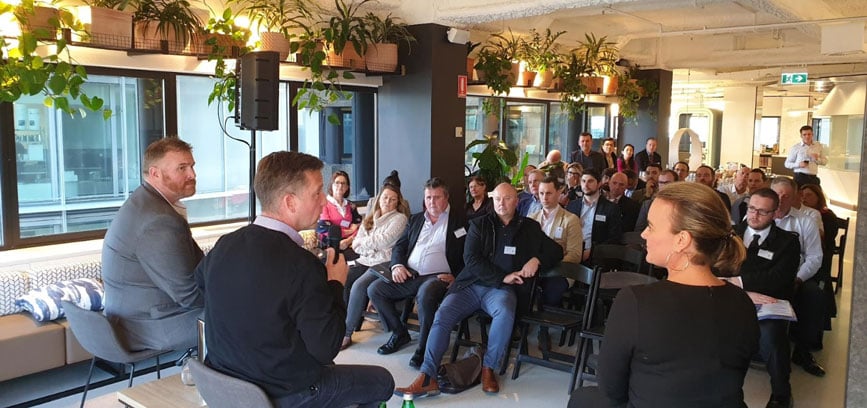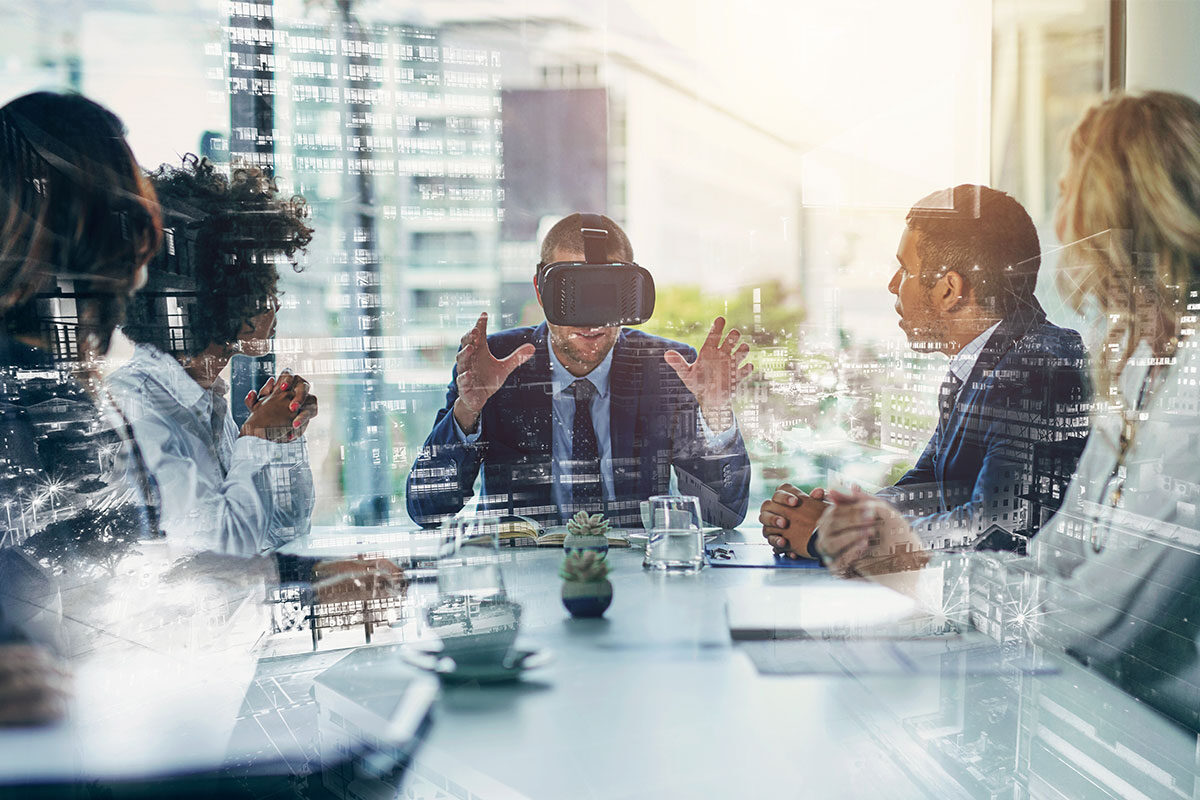In the last 18 months, the “workplace of the future” has accelerated faster than we could have imagined. No longer are we talking about remote work, e-commerce, and automation as ‘coming’ – they’re here. And they’re here to stay. So how should you respond to these changes and what else is on the horizon for the workplace?
The office is changing dramatically – and you need to quickly adapt. Preparing your workplace now will help you adjust to new employee expectations, adopt emerging technologies, and establish processes that support the new ways of working. In this post, we highlight the key workplace trends and how you can prepare for them, plus the policies and procedures you will need for the office of the future.
Key workplace trends you need to prepare for
Australian workplaces have already changed so much from March 2020. And they will keep on evolving as companies and employees adjust to the ways of working. It’s important to start making the necessary preparations now so you can future-proof your workplace and be ready to respond to any ongoing changes in the working environment.
To help you develop an effective workplace strategy, we have identified key trends that will shape the workplace in 2021 and beyond.
Remote work and virtual meetings will continue
Remote working has become a part of the new workplace. 80% of Australian businesses say that remote work is here to stay even after the pandemic, and expect the trend to carry on through the long-term. And as a result, virtual meetings will also continue to be an essential way for teams to connect and collaborate.
To prepare your workplace for continued remote working, it is essential to have the right technology in place. Implement technology that provides a seamless and consistent experience for both onsite and remote teams. Having the right digital collaboration tools like Microsoft 365 or Google Workspace can help ensure that employees stay connected, engaged and productive.
Meeting rooms also need to be equipped with the right video conferencing technologies that help bridge the gap between the physical and virtual working environments.
Lastly, your company needs to maintain a positive and inclusive culture within a hybrid working model, engaging with all employees – whether they are working at the office or remotely.
Faster adoption of automation and AI
Automation and AI would be the main focus of many workplaces as companies focus on streamlining processes and building more efficient operations. These innovative technologies can improve workflows, analyse complex data, and automate manual tasks.
But how do you prepare your workplace now for the faster adoption of automation and AI? It starts with understanding the impacts of these technologies on your current and future operations. What tasks and processes can you automate? What is the best way to deploy the necessary AI-powered tools? What new operational models need to be implemented? Answering these questions can help you plan the way forward.
The next step is to get buy-in, not only from upper management, but also from all employees. Workplace transformation won’t happen if you don’t get the support you need from stakeholders and staff.
More workforce transitions
As you implement AI and other new technologies, there will be a need for more staff training and development to help develop the necessary skills in the digitally enabled environment. So, more workforce transitions would be expected to happen in the future workplace so people can adjust to the changes in processes, roles, and operational models.
To prepare for this trend, your workplace needs to be able to support and facilitate educational programs for all employees. These programs would focus on developing critical skills as well as open up opportunities for personal and professional development.
One way to deliver these educational programs is through online training platforms like podcasts. According to Annelie Xenofontos, Senior Workplace Strategist at Axiom Workplaces, a growing trend is to use workspaces to “host podcast style, recording studios, where trainers can record something and then broadcast it to the organisation so they can train online. CEOs can make announcements that are pre-recorded. Employees can also be onboarded online.”
Renewed focus on workplace resilience
If there’s one thing that the pandemic has taught us – it’s that we cannot control or predict the future. Unexpected events can happen anytime. To survive, businesses need to be able to respond and adapt quickly to changes.
In a hybrid workplace model, workplace resilience becomes more important than ever as teams adjust to new ways of working and bridge the gap between the physical and virtual environments. So, how do you build a resilient workplace?
- The process starts with implementing activity based or agile working methodology. Agile practices enable teams to respond to change quickly, adopt new processes, and adjust goals and priorities as needed.
- Technology also plays an important role in building resilience in the workplace. Make sure you have the right tools and technologies for people to connect, collaborate, and do their best jobs.
- Lastly, focus on employee health and wellbeing. Create spaces within the office where people can relax, de-stress and socially connect with each other. It’s also important to make sure remote workers feel connected, engaged, and part of an inclusive culture.
Policies and procedures essential in the future workplace
As you can see, there are a lot of changes happening in the future workplace. And you need to make sure that you provide clear expectations and guidance around employee behaviour, day-to-day processes, and operational workflows. Here are some of the policies and procedures needed in the new workplace:
Remote work
With remote working set to continue, you need to have a policy that guides people as they work from home or remotely from another location. The remote work policy should include who can work remotely, how often, and what procedures need to be followed. This needs to also cover health and safety recommendations while working remotely – with guidelines on home office and desk setup, handling computer equipment, emergency procedures, and tips for wellness and mental health.
Annelie highlighted the need to talk to your HR department and make sure they have the right flexible policies in place for remote working. “They need to have policies that clearly define what needs to be provided from a facilities perspective. Do we send employees a chair, table and monitor? Or do they just get an allowance to purchase what they need? There also needs to be a policy on checking that the workspace at home is actually safe when working remotely.”
Virtual meetings
This policy on virtual meetings would be needed to help guide both onsite and remote workers as they connect and collaborate with each other. The policy would focus on procedures in scheduling and joining online meetings, setting up your video and audio, and logging in to the video conferencing platform. It can also include virtual meeting etiquette like dressing appropriately, muting when you’re not talking, speaking up and contributing, plus staying focused and paying attention during the meeting.
Security
You may already have a policy on security, but it’s worth reviewing and updating this to make sure your company data remains protected in a hybrid working environment. As employees continue to work remotely and access applications and data from cloud-based platforms, this can expose the company to numerous cyber security risks. The security policy would help employees be aware of any threats, take precautions when visiting websites and downloading documents, and make sure their device security software is always kept up to date.
Digital inclusion
With a hybrid workforce working from different locations, a policy that covers dispersed workers has become more important. The policy should clearly communicate the value that the company puts in supporting their dispersed workforce. It should promote a positive and inclusive culture where everyone has equal access to technology, resources and opportunities, including remote workers who can feel isolated and disconnected from the rest of the team.
If you’d like to learn more about how to prepare for the workplace of the future, read our Progressive Leader’s Guide to the Future of Work in Australia.









